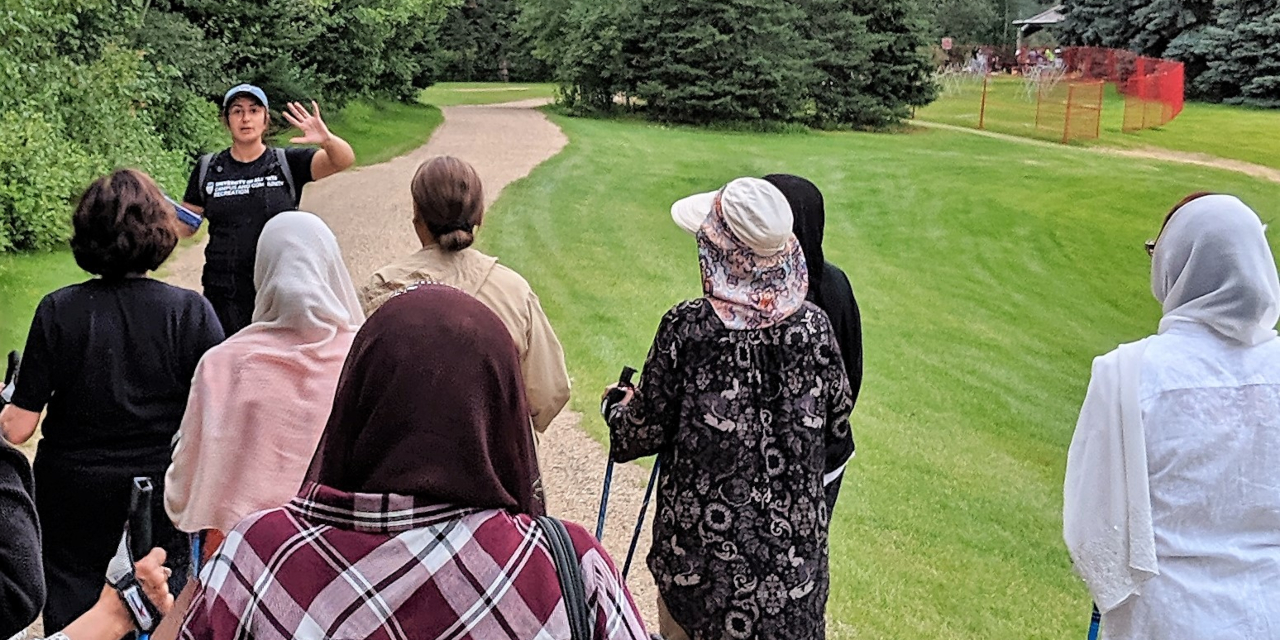More tailored and culturally appropriate activity programs would help immigrant populations overcome cultural and other barriers to exercise, according to new research out of the University of Alberta.
Previous studies have shown that immigrant populations want to get more exercise but are often hesitant because of social or cultural norms, said Jordana Salma, a nursing assistant professor who co-led the research.
- RELATED: Walk like a penguin and other tips to avoid winter slips and falls
- RELATED: Forget the spandex: Being active is much easier than you think
"It takes a lot of guts to leave the house, take a bus, join a program, especially if there are additional barriers like language or chronic pain," she said. "If you're going to join a program at a fitness centre and you're alone, you stand out. You dress differently, you look different, you didn't grow up taking part in organized physical activity. It wasn't part of your cultural daily behaviour."
Along with physical therapy professor Allyson Jones, she evaluated a walking program developed by physiotherapy researchers from the universities of Toronto and Manitoba to test its effectiveness in helping immigrant populations become more physically active outdoors.
Working with the Muslim Association of Canada-Rahma Mosque, colleagues in the U of A's School of Public Health and Campus and Community Recreation, Salma and Jones recruited 14 seniors aged 55 to 75 for the project. They provided a workshop on the basics of being physically active and preventing falls, talked about proper footwear and hydration, and assessed their health, balance and walking ability to prepare them for group walking once a week.
"We had an overwhelming response to participate in the program, which included people with varying walking abilities, so they wanted to see it more individually tailored," Salma said.
Each one-hour session, led by an instructor who spoke Urdu, began with a warm-up and ended with a cool-down. Over the weeks, the seniors-all of whom stayed with the program-learned how to improve their balance, move through crowds and safely cross streets. To stay active beyond their weekly walks, they were encouraged to wear a Fitbit, a wrist device that measures movement and step count. The high-tech gadget proved popular, Salma noted.
"One participant called it her mini walking buddy. She said it was like someone was walking with her."
Some seniors also felt the Fitbit held them accountable for being active-an encouraging sign of how an older demographic responds to technology, Salma said.
They also expressed a desire for cultural guidance on how to dress modestly but wisely for physical activity, how to stay hydrated during fasting days and how to accommodate prayer times.
Having social rapport was also important to the seniors, said Jones, who works out of the Faculty of Rehabilitation Medicine.
"An older adult may feel vulnerable in an exercise class because they don't know what to expect in a room full of strangers. They'd like to know the people and the program so that if they get tired and need to rest, it's all right to do that," she said.
The results of the project point to a need for "safe spaces" for visible minorities to help them boost their physical activity, Salma said.
"We have to understand what would make a community feel safe to actively access and participate in physical activity programming."
That means building trust by "co-designing" programs with immigrant communities, she said. "We need to meet them where they're at."
